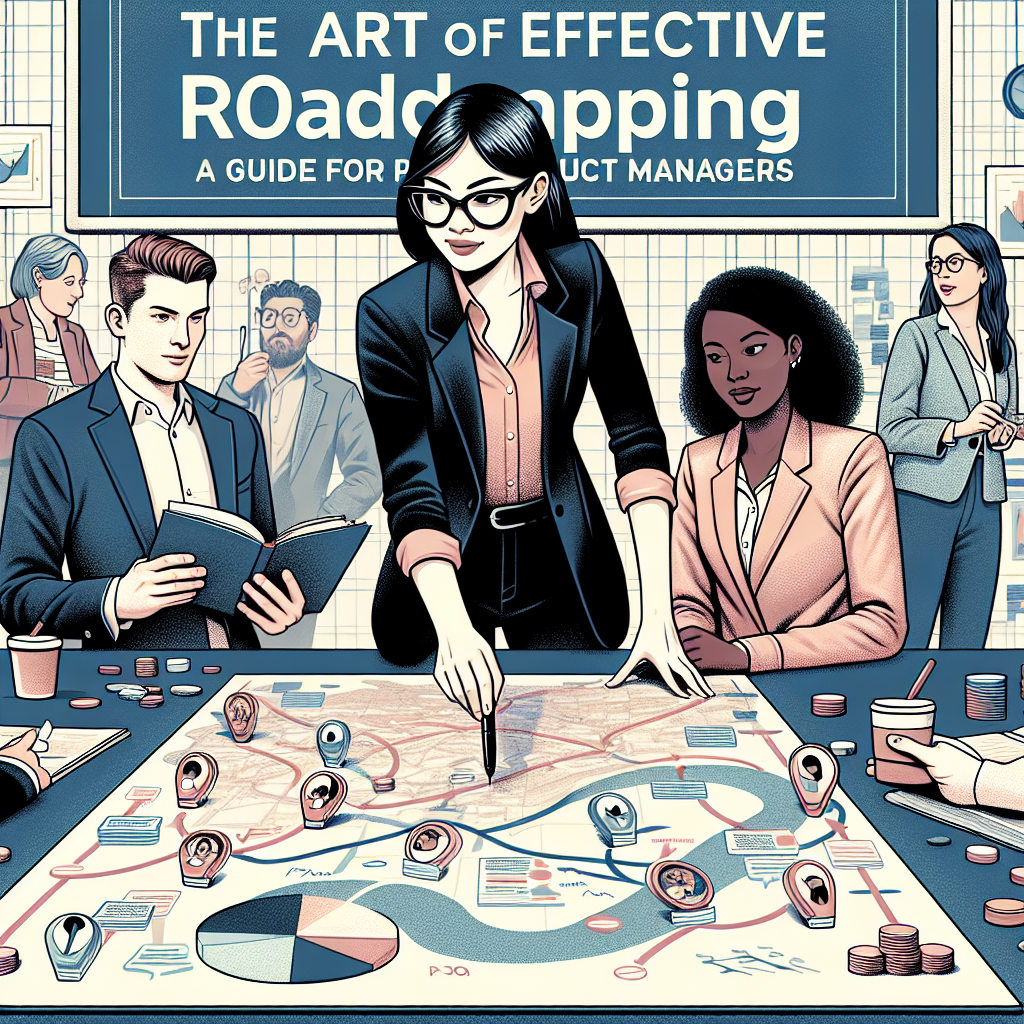The Art of Effective Roadmapping: A Guide for Product Managers

As a product manager, one of the essential skills you need to master is effective roadmapping. A well-crafted roadmap aligns your team, stakeholders, and customers, clearly showing the strategic direction and priorities of your product. However, creating and maintaining a product roadmap is more than just planning features and timelines. It involves balancing strategic goals with customer needs, stakeholder interests, and market dynamics. In this blog post, we delve into the art and science of roadmapping, offering practical tips and strategies to help you create roadmaps that drive success.
Why Roadmaps Matter
Product roadmaps serve several critical functions in product management:
- Strategic Alignment: Ensure that everyone in the organization understands and works towards common goals.
- Prioritization: Focus on the most important initiatives that deliver the highest value.
- Communication: Provide a clear visual representation of your product strategy, helping to communicate plans to stakeholders and customers.
- Accountability: Set expectations and track progress against strategic objectives.
Key Elements of a Product Roadmap
To create a compelling product roadmap, you need to include several key elements:
- Vision and Strategy: Clearly articulate the long-term vision and strategic objectives of your product.
- Themes and Epics: Group related features and initiatives into high-level themes or epics that align with your strategy.
- Timeline: Provide a broad timeframe for when different themes and initiatives will be addressed, without committing to specific dates.
- Priorities: Rank initiatives based on their importance and impact, ensuring that high-priority items are addressed first.
- Milestones: Identify key milestones that signify important accomplishments or stages of development.
Types of Roadmaps
There are several different types of roadmaps, each serving a specific purpose. Here are three common types:
1. Strategic Roadmap
A strategic roadmap outlines the high-level strategy and long-term vision for your product. It focuses on themes, goals, and key initiatives rather than specific features or dates.
2. Product Roadmap
A product roadmap provides a more detailed view of the features and functionalities you plan to deliver over time. It includes timelines, priorities, and dependencies, offering a clear picture of what’s coming next.
3. Release Roadmap
A release roadmap is a short-term plan that outlines the specific features and improvements to be delivered in the next release cycle. It is often used to coordinate development efforts and communicate release plans to stakeholders.
Steps to Create an Effective Roadmap
Creating an effective roadmap involves several key steps:
1. Define Your Vision and Goals
Begin by clearly defining the long-term vision and strategic goals for your product. Understand why your product exists, what problems it solves, and what success looks like.
2. Gather Input from Stakeholders
Engage with stakeholders—including customers, sales, marketing, and development teams—to gather input and insights. Understand their needs, priorities, and pain points.
3. Prioritize Initiatives
Based on the input gathered, prioritize initiatives using criteria such as impact, feasibility, customer value, and alignment with strategic goals. Focus on initiatives that deliver the highest value.
4. Create the Roadmap
Use roadmapping tools like Aha!, Roadmunk, or Trello to create a visual representation of your roadmap. Organize initiatives into themes, set broad timeframes, and highlight priorities and milestones.
5. Communicate and Iterate
Share the roadmap with stakeholders and gather feedback. Use this feedback to refine and improve the roadmap. Roadmapping is an iterative process—continually update and adjust the roadmap based on new insights and changing priorities.
Lessons Learned: Common Pitfalls and How to Avoid Them
Throughout my career, I have encountered several common pitfalls when it comes to roadmapping. Here are some lessons learned and tips to avoid these pitfalls:
- Overcommitting: Avoid committing to specific dates or features too far in advance. Stay flexible to adapt to changing priorities and market conditions.
- Lack of Alignment: Ensure alignment with strategic goals and stakeholder expectations. Regularly communicate and validate the roadmap with all relevant parties.
- Ignoring Feedback: Actively seek and incorporate feedback from customers and stakeholders. A roadmap should reflect real user needs and challenges.
- Underestimating Dependencies: Consider dependencies and constraints when planning initiatives. Address potential bottlenecks and allocate resources effectively.
Success Story: Effective Roadmapping in Action
A notable success story comes from a SaaS company I previously worked with. The company was struggling with frequent changes in priorities, leading to misalignment and missed deadlines. After implementing a strategic roadmapping process, we achieved several positive outcomes:
- Clear Direction: The team had a shared understanding of the product vision and strategic goals.
- Improved Focus: Prioritized initiatives led to focused efforts on high-impact features and improvements.
- Enhanced Collaboration: Regular communication and feedback loops fostered a collaborative environment and aligned stakeholders.
- Successful Releases: The company consistently met release timelines and delivered features that resonated with customers.
Conclusion
Effective roadmapping is a vital skill for product managers, enabling you to align teams, prioritize initiatives, and communicate your product strategy. By defining a clear vision, gathering stakeholder input, prioritizing initiatives, and creating a visual roadmap, you can set your product on a path to success. Remember, roadmapping is an evolving process—regularly update and iterate on your roadmap to adapt to new insights and changing priorities. Have you experienced success or challenges with roadmapping? Share your stories and tips in the comments below!



